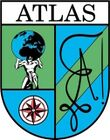Advanced Land-Climate Dynamics
Uiterlijk
| Courses and exams | |
|---|---|
| Prof | Thiery Wim |
| Courses | Lectures and exercises |
| Examination | Oral and written exam Reports |
| Background | |
| Credits | 3 |
| When? | 1st semester |
| ECTS | VUB |
New course since 2018-2019
There are only four lectures, but it is important to also study the papers (very thoroughly), the materials of the excercises and eventually the extra documents (IPCC reports), because they also come back on the exam.
2022
January
17/01/22
Oral:
- What are the pathways to achieve the most ambitious targets set out by the Paris Agreement. And what would be the impact on land of following this pathways.
- What are the main findings of Stenzel et al 2021. What are the strengths and weaknesses of their approach.
- Explain three figures:
- Figure from the slides from the part on ET-regimes (Yearly correlation of evapotranspiration with precipitation and radiation based on simulations from the Global Soil Wetness Project, which can also be found in Teuling et al 2009).
- Figure that was not in the slides, figure 2.22 of the IPCC's special report on climate change on land, that is about moisture recycling (something that is covered in the slides, but not with this figure)
- Figure from the slides about regression models performing better than LSM's for mean fluxes.
Written:
- You get a figure with the effect of conservational agriculture on the minimal nighttime temperature (Tnn). This temperature is warmer than in a situation without conservational agriculture. Explain this with the water and energy balance.
- Explain the soil moisture temperature feedback and explain the role of soil texture in this.
- Given that you have the file gleam_V31a_version2.nc and the files control.clm2.h0.0001-01.nc, control.clm2.h0.0001-02.nc, ... after running the model. How would you process these files to asses the bias on the results. We only want the code for processing not the code used for the visualisation. (They thus expect from you to now the code you used for this).
2019
24/01/19
Oral:
- What are the processes influencing near-surface temperature in idealized deforestation experiments and how do they vary with latitude?
- What are the main findings of Boysen et al. (2017) (terrestrial carbon dioxide removal as climate mitigation). What are strengths and weaknesses of this approach?
- Explain figures (climate/EF diagram , grid/subgrid scale SWnet and LHF from the conservational agriculture paper, return period/water level plot)
Written:
- Use the surface energy balance and water balance frameworks and atmospheric dynamics to explain the OT pattern (a type of convective clouds) over lake Victoria dring day and night.
- What is the soil moisture-precipitation coupling and how does spatiotemporal soil moisture heterogeneity influence convective precipitation probability? Include a schematic of the different feedback mechanisms.
- What is the difference between the compset and the namelist in the Community Land Model?
